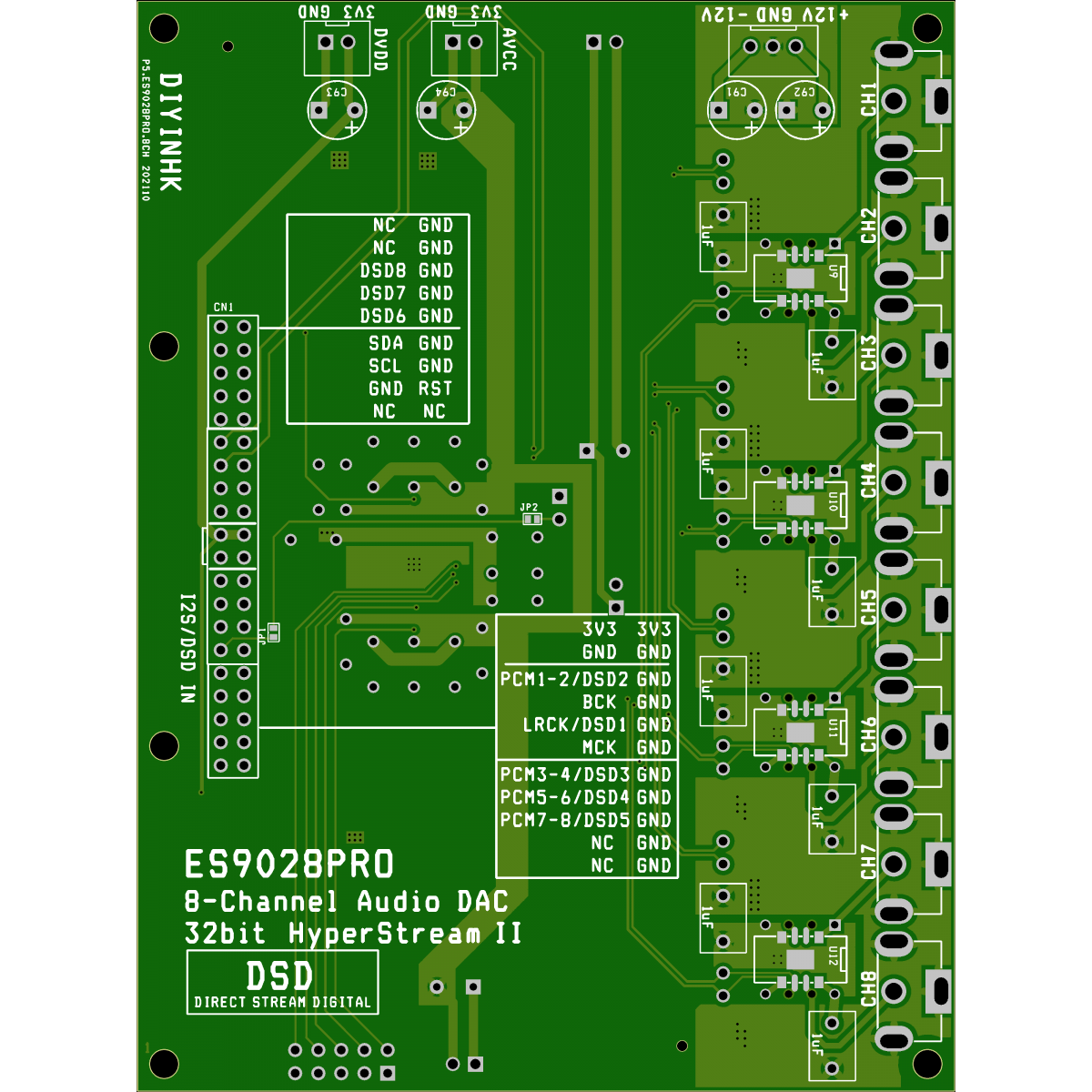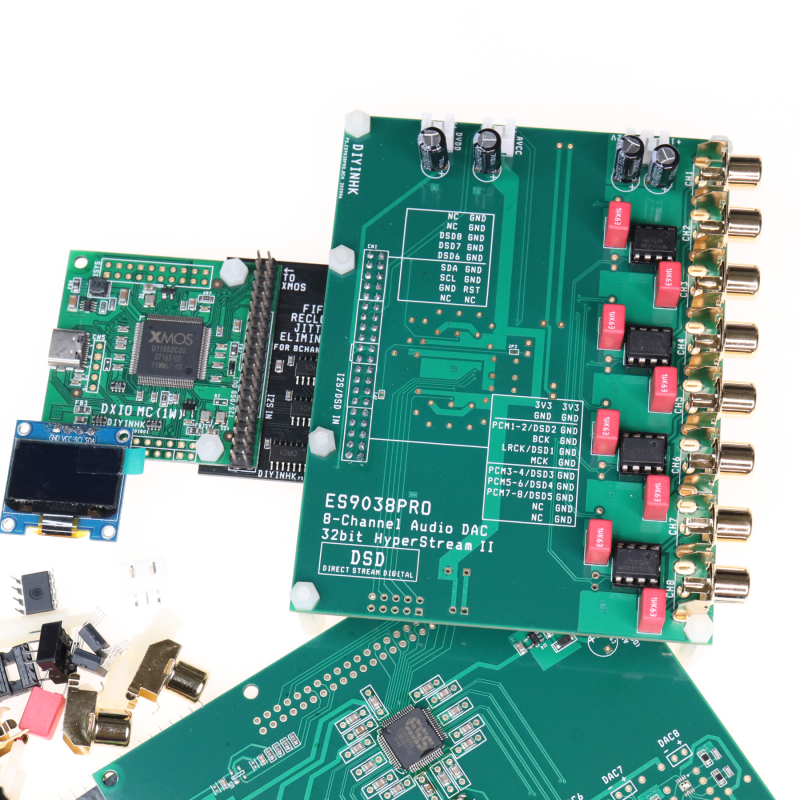Hello team,
I don't have any formal education in electronics but I have tried and finished a few simple electronic DIY projects in the last year and a half, related with audio or not. Quite often with the help of this forum. I enjoyed all of them and learned a lot.
Until now, my self imposed restrictions were 5VDC max, and when it comes to audio, stick to the digital domain. I feel like exploring outside of that if i find a feasible (for me) project.
My requirements are:
- 1 single DAC IC
- Multichannel. Minimum 4 channels, ideally 8.
- i2s inputs
- Balanced outputs.
- 24bit/96kHz
- Full reference schematics available, either from the supplier or from service manuals or projects available in the internet.
- Ideally 5VDC powered (like the topping D10) otherwise max 12VDC. (doesn't really matter to me if the balanced outputs are limited to a relatively low voltage, i would be more than happy with 3-4V)
- Chances to clear, at least on paper, say 96 db SNR. The higher the better, of course.
- I would consider hardware mode or having to program the chip if the required information is available, but hardware mode is of course preferred.
- Obtainable parts.
- Keep the exotic parts and snake oil to the minimum possible.
What are NOT my requirements:
- I don't aim for a soccer panther
- I don't need any USB interface, i2s input is enough
- I don't want premade PCBs or modules, commercial or diy, but the schematics are welcome.
- Volume control.
- Any status output.
I don't know where to start to search, and this is why i am asking here. But of course I have been exploring a bit and came across, for instance, the ES9017, that sells for 5 euros, ticks all the boxes and has hardware modes. But the recommended output stage in the datasheet works with opa1602 at35Volts...(edit: I was mistaken, looking at pictures of the evaluation board it seems to work at 15VDC). Maybe i am too naive and any balanced output circuit will need such voltages. In this case i will just forget about it.
Thanks for any directions, indications, tips, whatever!
I don't have any formal education in electronics but I have tried and finished a few simple electronic DIY projects in the last year and a half, related with audio or not. Quite often with the help of this forum. I enjoyed all of them and learned a lot.
Until now, my self imposed restrictions were 5VDC max, and when it comes to audio, stick to the digital domain. I feel like exploring outside of that if i find a feasible (for me) project.
My requirements are:
- 1 single DAC IC
- Multichannel. Minimum 4 channels, ideally 8.
- i2s inputs
- Balanced outputs.
- 24bit/96kHz
- Full reference schematics available, either from the supplier or from service manuals or projects available in the internet.
- Ideally 5VDC powered (like the topping D10) otherwise max 12VDC. (doesn't really matter to me if the balanced outputs are limited to a relatively low voltage, i would be more than happy with 3-4V)
- Chances to clear, at least on paper, say 96 db SNR. The higher the better, of course.
- I would consider hardware mode or having to program the chip if the required information is available, but hardware mode is of course preferred.
- Obtainable parts.
- Keep the exotic parts and snake oil to the minimum possible.
What are NOT my requirements:
- I don't aim for a soccer panther
- I don't need any USB interface, i2s input is enough
- I don't want premade PCBs or modules, commercial or diy, but the schematics are welcome.
- Volume control.
- Any status output.
I don't know where to start to search, and this is why i am asking here. But of course I have been exploring a bit and came across, for instance, the ES9017, that sells for 5 euros, ticks all the boxes and has hardware modes. But the recommended output stage in the datasheet works with opa1602 at
Thanks for any directions, indications, tips, whatever!
Last edited:


